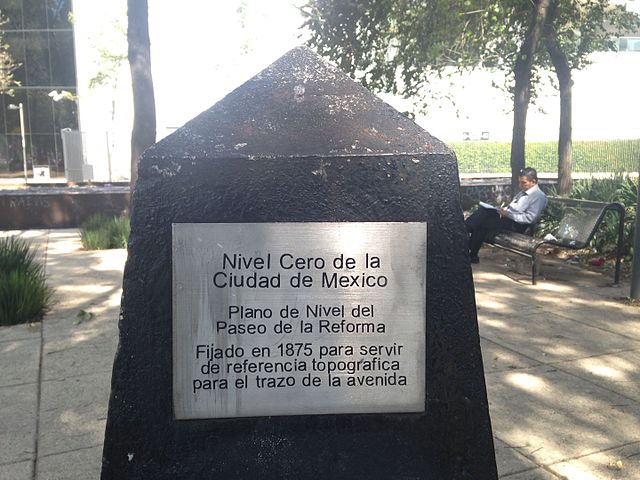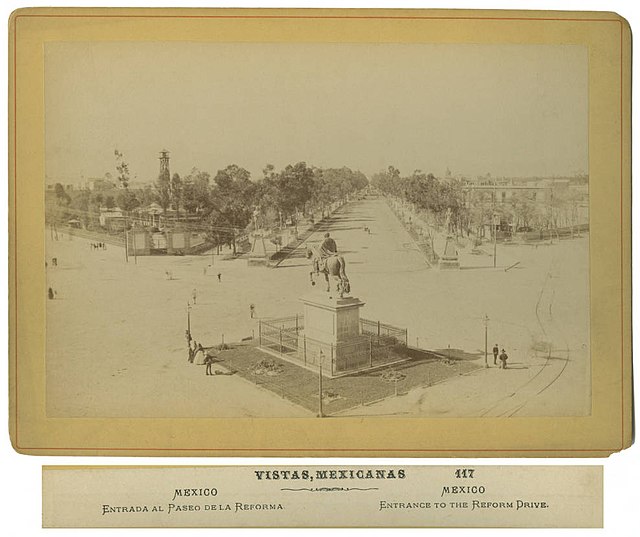The Torre Mayor is a skyscraper in Mexico City, Mexico. With a height of 225 meters to the top floor and 55 stories, it is the eighth tallest building in Mexico. It was surpassed in height by Torre BBVA Bancomer in 2015, which in turn was surpassed by Torre Reforma. From its completion in 2003 until 2010 it was also the tallest building in Latin America. The Torre Mayor was developed by Canadian businessman Paul Reichmann, who also maintained part ownership until his death in 2013. It is also part-owned by a group of institutional investors. The building was designed by the architectural firms of Zeidler Partnership Architects and Executive Architects Adamson Associates Architects, both of Toronto. The structural engineers and designers were The Cantor Seinuk Group from New York City in association with Enrique Martínez Romero S.A. in Mexico City.
Torre Mayor
Front entrance
Paseo de la Reforma is a wide avenue that runs diagonally across the heart of Mexico City. It was designed at the behest of Emperor Maximilian by Ferdinand von Rosenzweig during the era of the Second Mexican Empire and modeled after the great boulevards of Europe, such as the Ringstraße in Vienna and the Champs-Élysées in Paris. The planned grand avenue was to link the National Palace with the imperial residence, Chapultepec Castle, which was then on the southwestern edge of town. The project was originally named Paseo de la Emperatriz in honor of Maximilian's consort Empress Carlota. After the fall of the Empire and Maximilian's subsequent execution, the Restored Republic renamed the Paseo in honor of the La Reforma.
Paseo de la Reforma as seen from Chapultepec Castle
Paseo de la Reforma skyline
Nivel cero de la Ciudad de México, topographic monument 1875, to mark the path of the Paseo.
Ornate King Charles IV of Spain statue of the Paseo de la Reforma in the 19th century.






